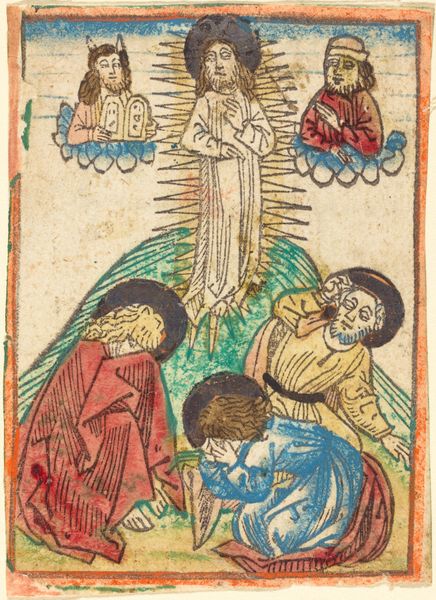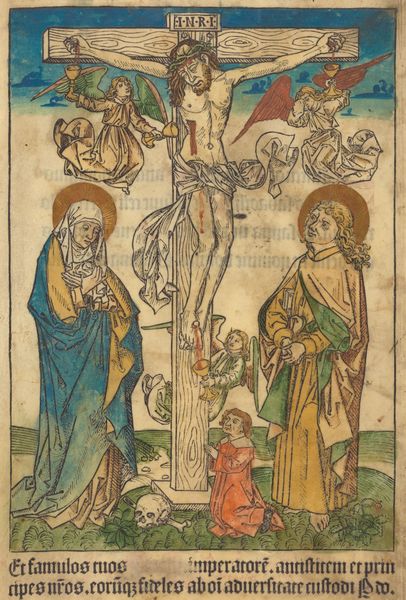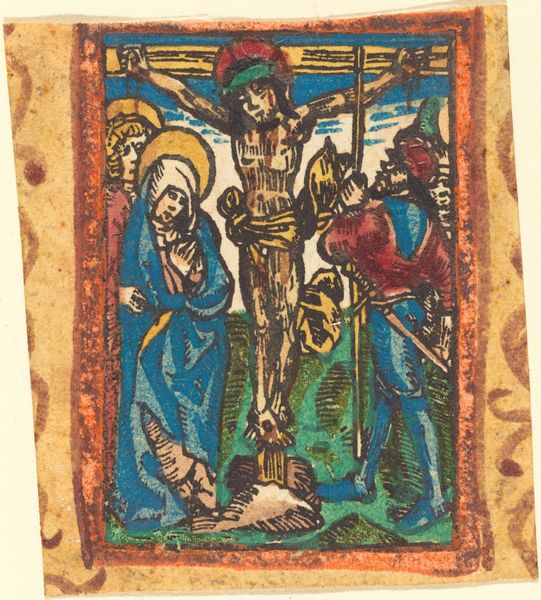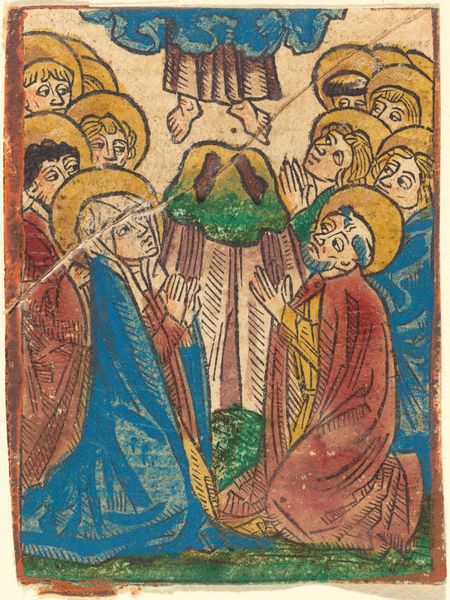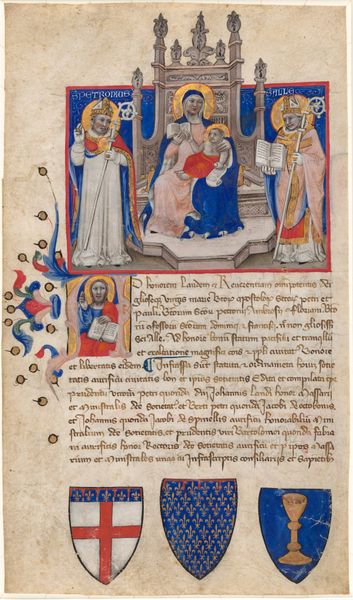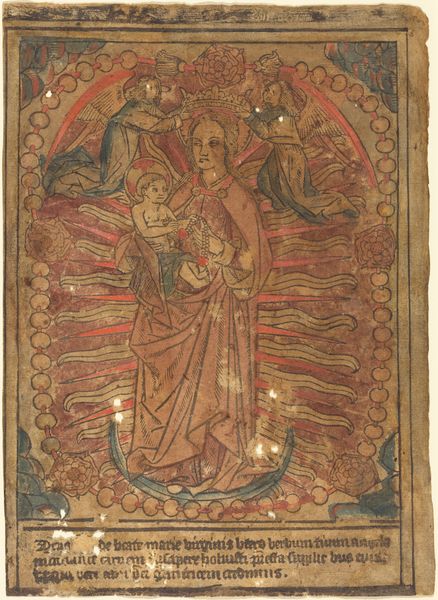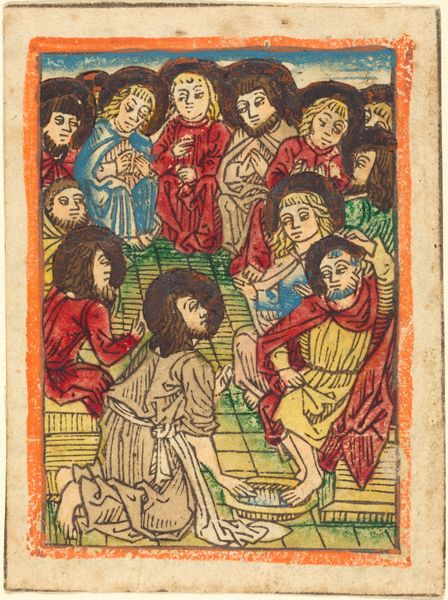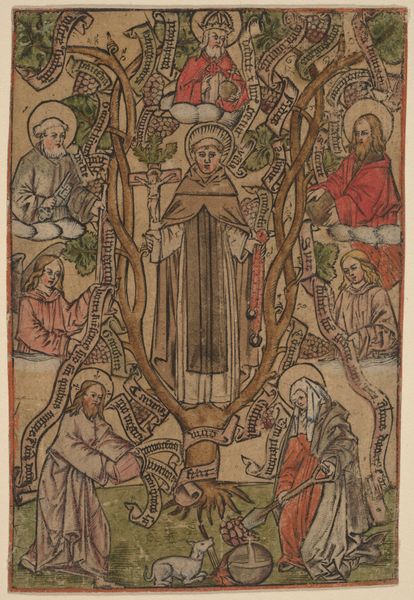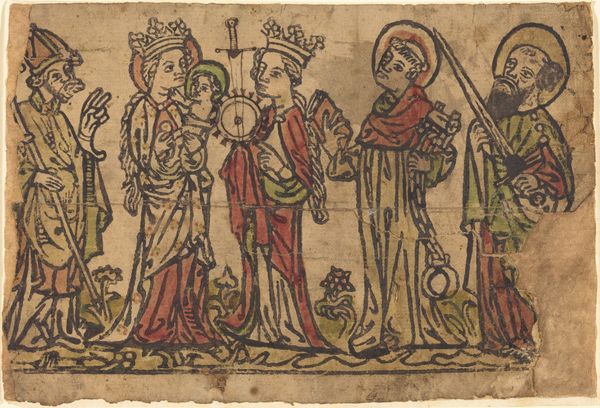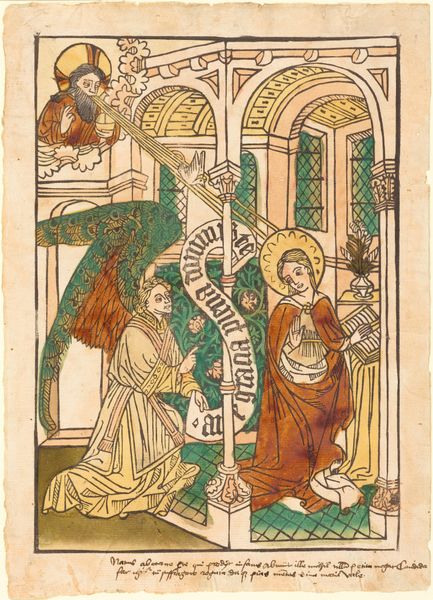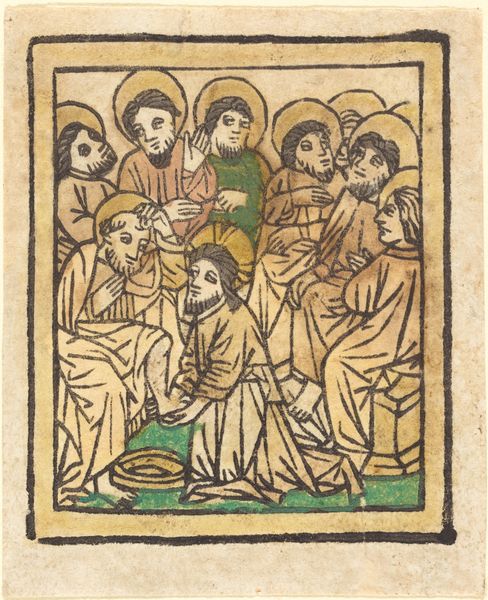
print, woodcut
#
medieval
#
narrative-art
# print
#
figuration
#
woodcut
#
history-painting
#
northern-renaissance
Dimensions: image: 26.5 x 38.9 cm (10 7/16 x 15 5/16 in.) sheet: 26.7 x 39.1 cm (10 1/2 x 15 3/8 in.) overall (exterior frame dimensions): 44.8 x 60 cm (17 5/8 x 23 5/8 in.)
Copyright: National Gallery of Art: CC0 1.0
Editor: This woodcut is called "Holy Kinship," created around 1490-1500 by an anonymous artist. There's such a powerful emphasis on family, but it also feels a bit...rigid in its presentation of religious figures. How do you interpret this work, considering its historical context? Curator: That "rigid" feeling, I think, stems from the Northern Renaissance's focus on lineage and religious authority in a society undergoing immense change. Look at how the figures are arranged - a deliberate construction of the family of Jesus to cement power structures. It's about demonstrating who belongs and, conversely, who does not. What social anxieties might this artwork be addressing, given its production during a period of societal upheaval? Editor: Well, with the Reformation looming, perhaps this image aimed to reinforce traditional Catholic family values and hierarchies. The numerous figures seem to assert strength in numbers. Curator: Precisely. And consider the role of women here—Anna and Mary. While revered, their power is intrinsically linked to their maternal role. The artwork subtly dictates acceptable forms of female agency in a patriarchal society, framing them within divine expectations. It presents a highly specific, and thereby exclusionary, model for women in that era. Do you think it provided solace or promoted anxiety? Editor: It seems like both, actually. It offers a comforting narrative of kinship, but simultaneously imposes rigid expectations that may have felt suffocating for many women. The image really highlights the complicated power dynamics embedded in religious narratives. Curator: Indeed. The 'Holy Kinship' is not just a religious scene; it's a potent visual tool for negotiating identity, gender, and authority in a turbulent historical moment. I found this deeper awareness very interesting. What about you? Editor: I see it now. Understanding the complex historical and social landscape helps us read this image as more than just a simple religious scene; it becomes a reflection of a society grappling with power, gender, and faith. Thanks!
Comments
No comments
Be the first to comment and join the conversation on the ultimate creative platform.
